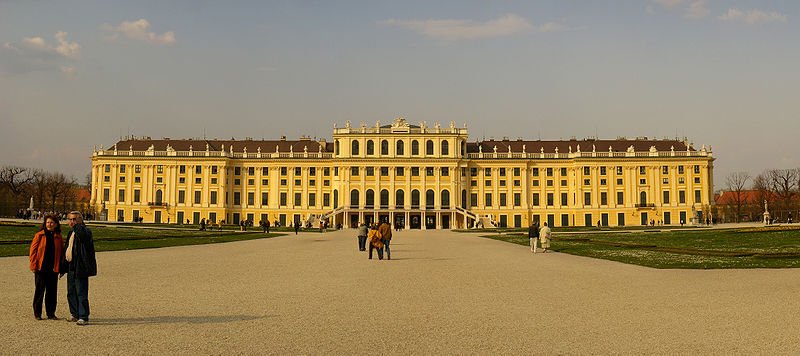 Schloß Schönbrunn, or Schönbrunn Palace, in Vienna, Austria
Schloß Schönbrunn, or Schönbrunn Palace, in Vienna, AustriaSource: https://commons.wikimedia.org/wiki/File:Schlo%C3%9F_Sch%C3%B6nbrunn.jpg
Author: Philipp Mayer

The Palace of Schönbrunn was the residence of the Habsburg emperor in the 18th to the early 20th century. It is located to the southwest of the city center of Vienna, Austria. Today the palace and its garden are a World Heritage Site. It was inscribed during the 20th session of the World Heritage Committee, which took place in Merida, Mexico on 2-7 December, 1996.
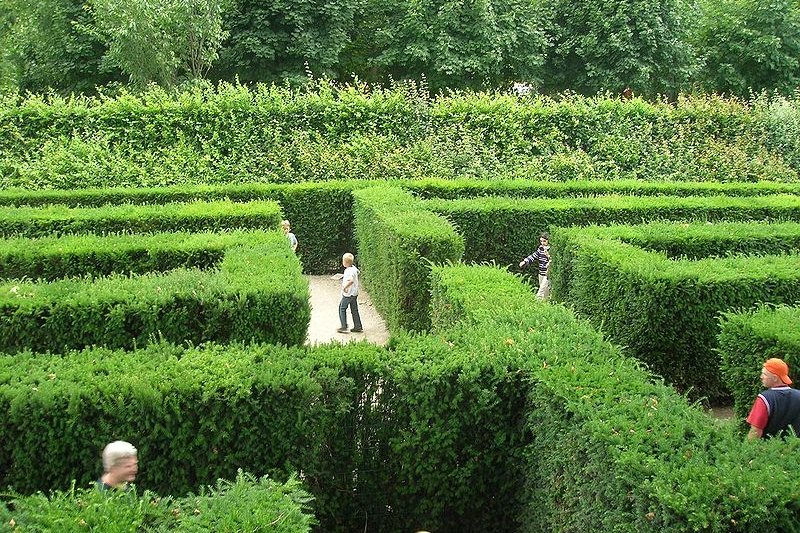 The maze at Schönbrunn Palace
The maze at Schönbrunn PalaceSource: https://commons.wikimedia.org/wiki/File:Labirinth_schonbrunn.JPG
Author: Andrea Schaufler

Schönbrunn is one of the best preserved Baroque royal palaces. Apart from some minor additions in the 19th century, much of the palace and its gardens were built in the 18th century. The World Heritage Site of Schönbrunn comprises a core zone of 186.28 hectares surrounded by a buffer zone of 260.64 hectares.
Schönbrunn was built on land which was purchased by the Holy Roman Emperor Maximilian II in 1569. In the early years, the land was game property stocked with pheasants, ducks, deer and boar. Its use was primary for the emperor's recreational hunting.
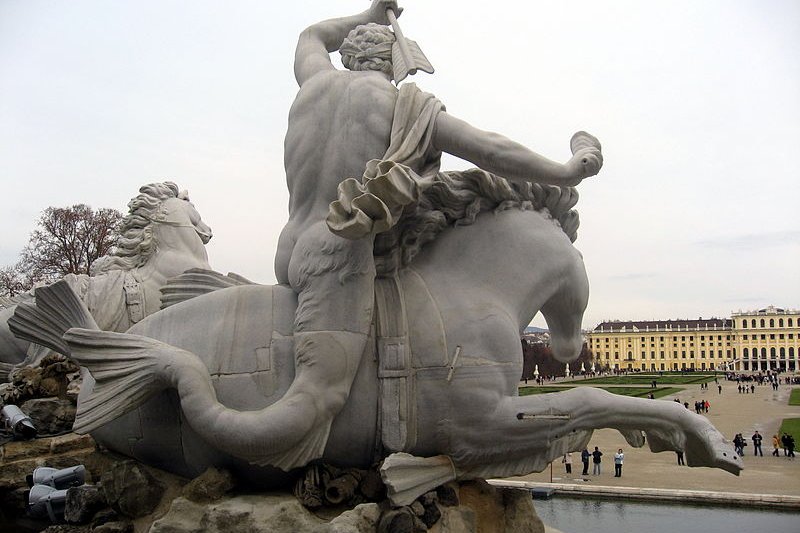 Sculptures on the grounds of Schloß Schönbrunn
Sculptures on the grounds of Schloß SchönbrunnSource: https://commons.wikimedia.org/wiki/File:Sch%C3%B6nbrunn_%288%29.jpg
Author: Dezidor

About Schönbrunn Palace
Schönbrunn was designed by Johann Bernhard Fischer von Erlach, the most famous Austria architect of the Baroque era, on the orders of Emperor Leopold I. His first draft was a very whimsical design with the purpose of topping Versailles in size and grandeur. His second draft is a smaller, more realistic building. This was accepted and construction began in 1696. Three years later, a sort of opening ceremony was held in the newly completed middle portion of the palace.Maria Theresa received it from her father, Emperor Charles VI. She decided to make it her imperial summer residence, and engaged her court architect, Nicolò Pacassi to renovate the palace and garden in the Rococo style. By the end of her reign, Schönbrunn Palace has become the nerve centre of Austria's empire. It remained the residence of the Austrian imperial family until the eventual abdication of Charles I in 1919.
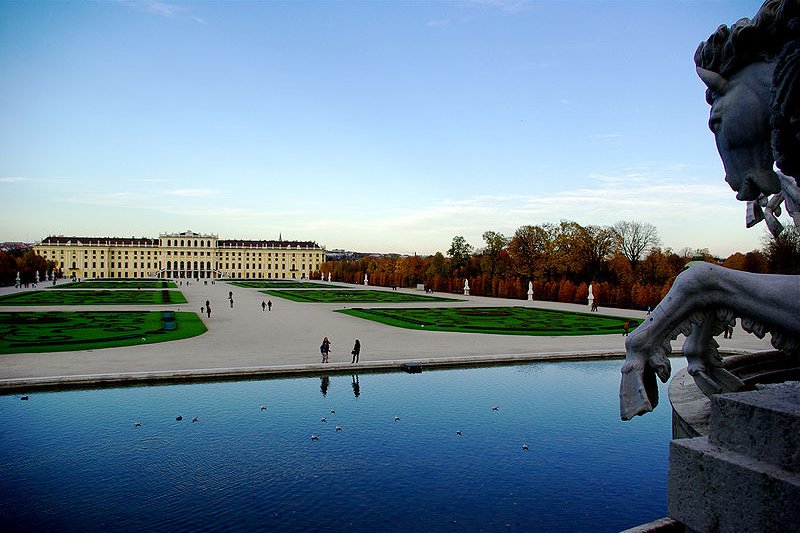 Schönbrunn Palace in its elegant serenity
Schönbrunn Palace in its elegant serenitySource: https://commons.wikimedia.org/wiki/File:Ch%C3%A2teau_de_Schonbrunn.jpg
Author: Mick7402

What to See in Palace and Gardens of Schönbrunn
The sights and things to see within Schönbrunn Palace:- Great Gallery: This is used for imperial banquets. The ceiling frescoes were done by Georgio Gugliemi
- Blue Chinese Salon: This is a room in the Rococo style, with Chinese scenes. Emperor Karl I, the last Austrian emperor, signed his abdication here in 1918.
- Large Rosa Room: This is one fo the three rooms with huge Swiss and Italian landscapes done by Josef Rosa. The room was named after him.
- Vieux-Lacque Room: This room is decorated with exquisite oriental lacquered panels. Maria Theresa lived here in her widowhood.
- Millions Room (Millionenzimmer): This room has fabulous Rococo decorations. Maria Theresa used it as her conference room.
- Round Chinese Cabinet: This is a room with walls of white and gold, and adorned with lacquered panels. Maria Theresa used it for private discussions with her state chancellor, Prince Kaunitz.
- Privy Garden
- Maze / Labyrinth
- Gloriette, with Panorama Terrace. The Gloriette
- The Zoo: Tiergarten Schönbrunn is the oldest zoo in the world, founded in 1752. It is today a scientifically administered zoo with the intention of conserving species and general nature.
- Sculptures: There are 32 sculptures lining the Great Parterre. They represent deities and virtues.
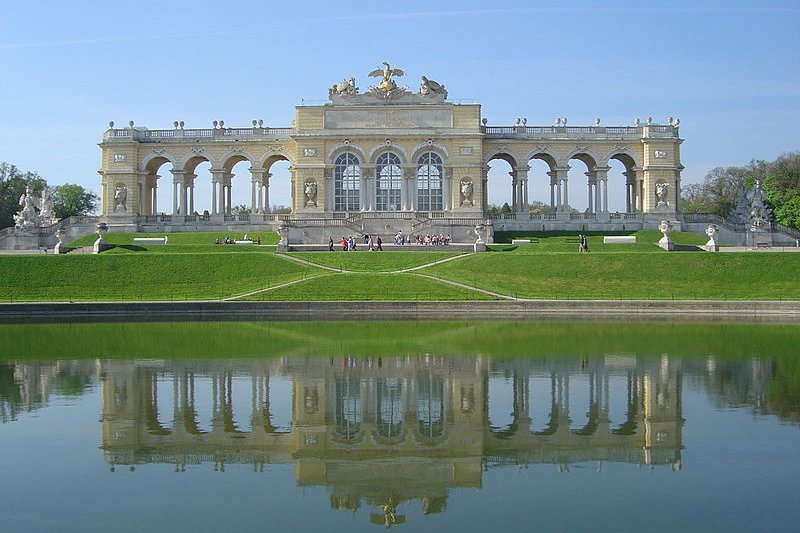 Gloriette, a pavilion at Schönbrunn Palace
Gloriette, a pavilion at Schönbrunn PalaceSource: https://en.wikipedia.org/wiki/File:Schloss_Schoenbrunn_Gloriette_DSC02028.JPG
Author: David Monniaux

World Heritage Site Inscription Details
Location: N 48 11 12 E 16 18 48Inscription Year: 1996
Type of Site: Cultural
Inscription Criteria: I, IV
Location
Schönbrunn is located to the southwest of Vienna.Getting there
Take the underground train, green line U4, to the Schönbrunn station. Trams Nos. 10 and 58 also go there, as does Bus No. 10A.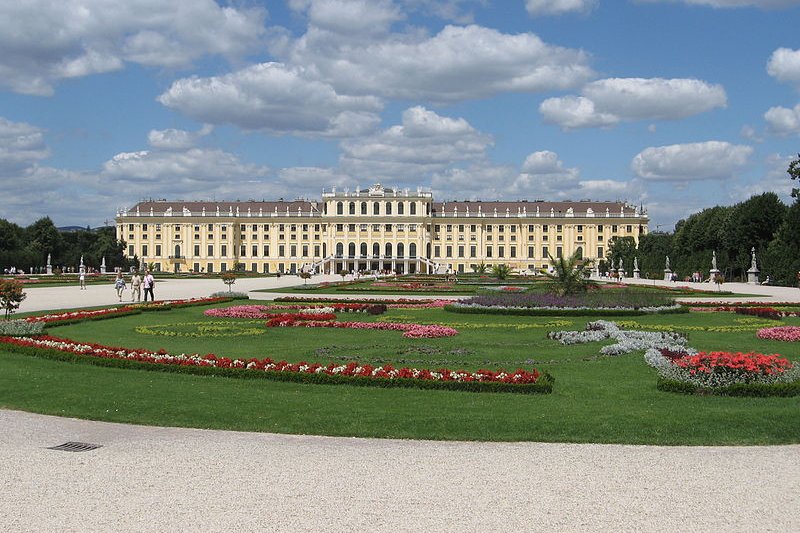 The beautiful grounds of Palace of Schönbrunn
The beautiful grounds of Palace of SchönbrunnSource: https://commons.wikimedia.org/wiki/File:Schloss_Sch%C3%B6nbrunn_0335.jpg
Author: Gveret Tered

List of World Heritage Sites in Austria and World Heritage Sites in the World
 Latest updates on Penang Travel Tips
Latest updates on Penang Travel Tips

Copyright © 2003-2025 Timothy Tye. All Rights Reserved.

 Go Back
Go Back